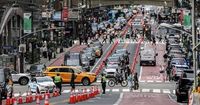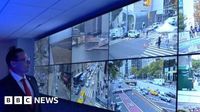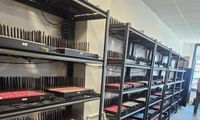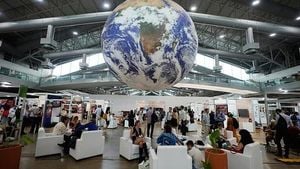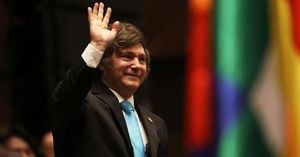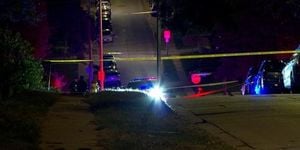In a dramatic and unsettling development just as world leaders converged on New York City for the 80th anniversary of the United Nations General Assembly, the U.S. Secret Service announced on September 23, 2025, that it had uncovered and dismantled a vast and sophisticated network of electronic devices capable of crippling cellular communications across the city and surrounding areas. The operation, which spanned multiple law enforcement agencies and intelligence units, averted what officials described as a potentially catastrophic disruption to both government operations and public safety.
According to reports from Reuters, NPR, and other major outlets, the Secret Service discovered more than 300 SIM servers and 100,000 SIM cards spread across multiple clandestine sites within 35 miles of the U.N. Assembly venue. The tri-state area sweep included New York, New Jersey, and Connecticut. The cache was found in abandoned apartment buildings and described by officials as both “well-organized and well-funded,” involving “nation-state threat actors and individuals that are known to federal law enforcement.”
Special Agent in Charge Matt McCool painted a stark picture of the threat, stating, “This network had the power to disable cell phone towers and essentially shut down the cellular network in New York City.” He further explained that the equipment could have been used to text the entire U.S. population within 12 minutes, launch distributed denial of service (DDoS) attacks, and potentially block emergency dispatch communications. The implications went far beyond routine espionage; the devices could have shut down critical infrastructure at the very moment the world’s diplomatic elite were gathered in Midtown Manhattan.
While the Secret Service did not disclose evidence of a specific plot targeting world leaders, the timing and location of the discovery raised immediate alarms. The annual U.N. General Assembly is widely acknowledged by former intelligence officials as “the Super Bowl of espionage,” with more than 1,100 foreign officials and staff converging in New York for high-level debates and negotiations. The potential for harm, as U.S. Secret Service Director Sean Curran emphasized, was significant and unprecedented in scale. “The U.S. Secret Service’s protective mission is all about prevention, and this investigation makes it clear to potential bad actors that imminent threats to our protectees will be immediately investigated, tracked down and dismantled,” Curran said in a public statement, as reported by The Federal.
The investigation began earlier in 2025, following a series of anonymous telephonic threats directed at three senior U.S. government officials—one from the Secret Service and two from the White House. These threats, which set off alarms within the highest echelons of national security, led to a protective intelligence inquiry that ultimately exposed the sprawling network of illicit telecom equipment. As McCool explained, “Following multiple telecommunications-related imminent threats directed towards senior U.S. government officials this spring, the Secret Service began a protective intelligence investigation to determine the extent and impact these threats could have on protective operations.”
Forensic analysis of the seized devices revealed not only the involvement of at least one foreign nation, but also connections to organized crime groups, cartels, and terrorist organizations. The Secret Service noted that encrypted communications were being exchanged between nation-state actors and individuals already known to federal law enforcement. Early investigation findings pointed to cellular communications between these “nation-state threat actors and individuals,” raising the specter of both espionage and criminal enterprise.
The equipment itself was described as capable of a range of attacks: disabling cell phone towers, enabling denial of service attacks, and facilitating anonymous, encrypted communication between potential threat actors and criminal enterprises. The sheer scale of the operation—100,000 SIM cards and over 300 SIM servers—underscored the resources and coordination behind the scheme. As BBC and NPR reported, authorities also found 80 grams of cocaine, illegal firearms, computers, and phones during the raids, further highlighting the criminal dimension of the network.
The Secret Service’s new Advanced Threat Interdiction Unit spearheaded the investigation, working closely with the New York Police Department, Homeland Security Investigations, the Department of Justice, the Office of the Director of National Intelligence, and other agencies. Their rapid response was credited with averting what could have been a major disruption not only to the U.N. event but to New York’s essential telecommunications infrastructure.
Officials have not yet specified how long the network had been in operation or whether its primary intent was to disrupt the U.N. General Assembly, conduct espionage, or facilitate criminal activity. However, the proximity to the U.N. venue and the scale of the threat left little doubt about the seriousness of the situation. The Secret Service made the unusual decision to share information about the threat with the public early, as McCool put it, “to safeguard critical infrastructure.”
The timing of the discovery comes against a backdrop of heightened concern over telecommunications security in the United States. National security officials and private sector experts have been tracking ongoing breaches of telecom companies, with the aim of stealing private communications from senior U.S. officials. One group, often referred to as Salt Typhoon and linked to the Chinese government, has been highlighted in previous high-profile investigations. While the Secret Service did not confirm any direct connection between the seized devices and Salt Typhoon, the broader context of escalating cyber and telecom threats was not lost on observers.
As the investigation continues, law enforcement agencies remain tight-lipped about the identities of the foreign actors involved or the ultimate objectives of the network. The discovery has nevertheless sent shockwaves through both the intelligence community and the diplomatic corps, serving as a stark reminder of the vulnerabilities inherent in modern communications infrastructure—especially during high-stakes global events.
With more than 100 world leaders and delegations now safely gathered in Manhattan, the swift action by the Secret Service and its partners stands as a testament to the ongoing, and often unseen, battle to protect not just individuals but the very systems on which modern society depends. The coming weeks may reveal more about the origins and intentions behind this sophisticated plot, but for now, the city—and the world’s diplomats—can breathe a collective sigh of relief.
